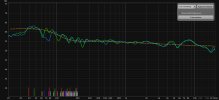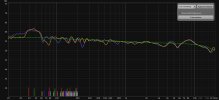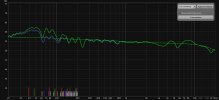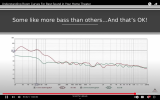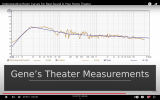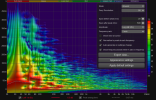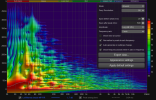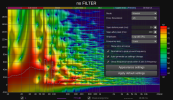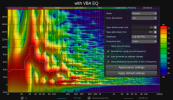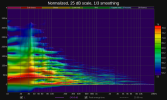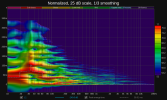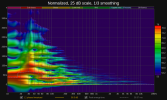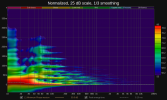I think it's fair to say that a preferred target curve should be pronounced with a preferred dB level as well as number of frequency dependent windowing cycles and type of smoothing applied to the response to reach that target.
Below REW plots are all from the same speaker responses for different fdw & smoothing parameters and different target curves. All targets and their levels are auto calculated from the default response. Interestingly, they only agree on the frequency magnitude at around 600Hz. REW will only change calculated target level by the fdw applied, type of smoothing used will not have an effect.
It can be seen quite clearly that the magnitude of correction required changes vastly depending on these factors alone. I use Mitch's fixed slope (0.7) target curve which I carefully deciphered from his video (and I believe that video is the bible of digital room correction) for around 75dB measurements and I am (along with many others) quite satisfied with its results. But for low volume night listening for example, I will need to boost the bass a bit. Almost all of us have a peak and dip in the lowbass region due to room modes. The dip will not disappear with any kind of correction. With songs that have bass around that frequency, you will feel your bass response is too low. If the bass frequency used is lower around your first peak, you'll feel bass is too strong. Additionally, there's the "trained vs untrained" ear dilemma which varies massively in the bass region in my experience with people's choices and I will not even go into that.
So, there's no one size fits all target response and apparently it's not even that important compared to so many other things you can get wrong in DRC IMHO.

Below REW plots are all from the same speaker responses for different fdw & smoothing parameters and different target curves. All targets and their levels are auto calculated from the default response. Interestingly, they only agree on the frequency magnitude at around 600Hz. REW will only change calculated target level by the fdw applied, type of smoothing used will not have an effect.
It can be seen quite clearly that the magnitude of correction required changes vastly depending on these factors alone. I use Mitch's fixed slope (0.7) target curve which I carefully deciphered from his video (and I believe that video is the bible of digital room correction) for around 75dB measurements and I am (along with many others) quite satisfied with its results. But for low volume night listening for example, I will need to boost the bass a bit. Almost all of us have a peak and dip in the lowbass region due to room modes. The dip will not disappear with any kind of correction. With songs that have bass around that frequency, you will feel your bass response is too low. If the bass frequency used is lower around your first peak, you'll feel bass is too strong. Additionally, there's the "trained vs untrained" ear dilemma which varies massively in the bass region in my experience with people's choices and I will not even go into that.
So, there's no one size fits all target response and apparently it's not even that important compared to so many other things you can get wrong in DRC IMHO.
Last edited:

